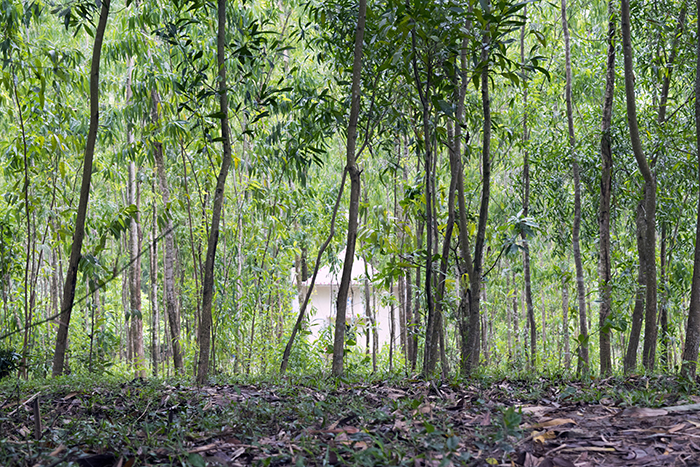
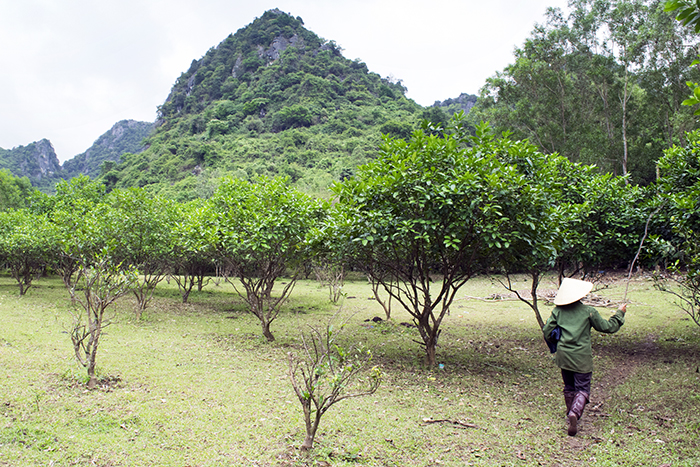
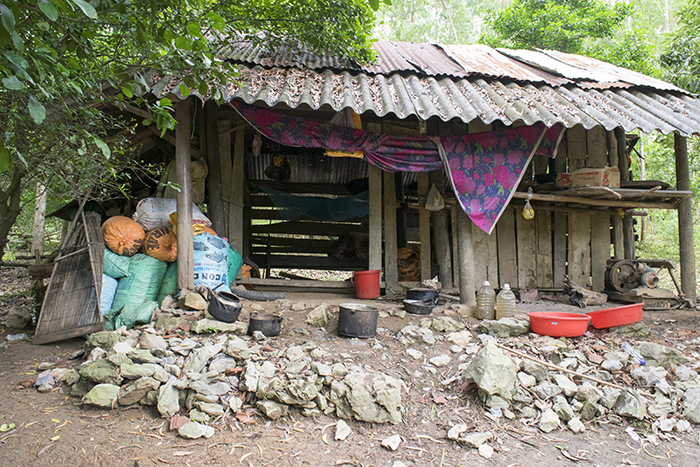
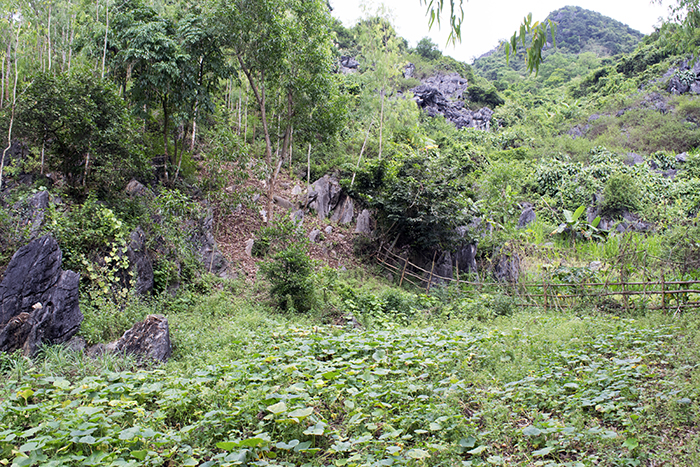
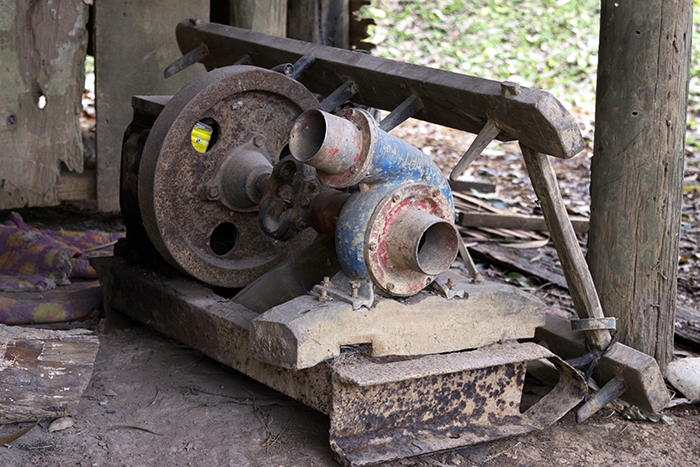
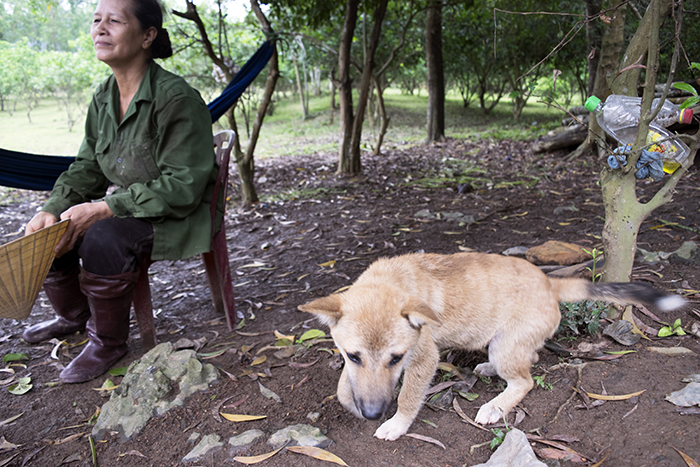
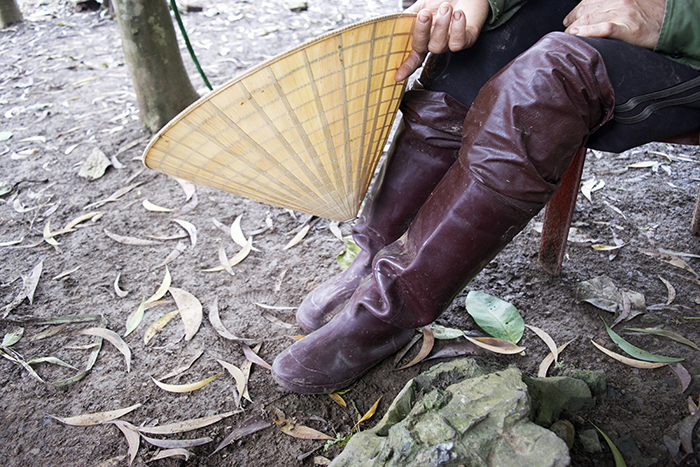
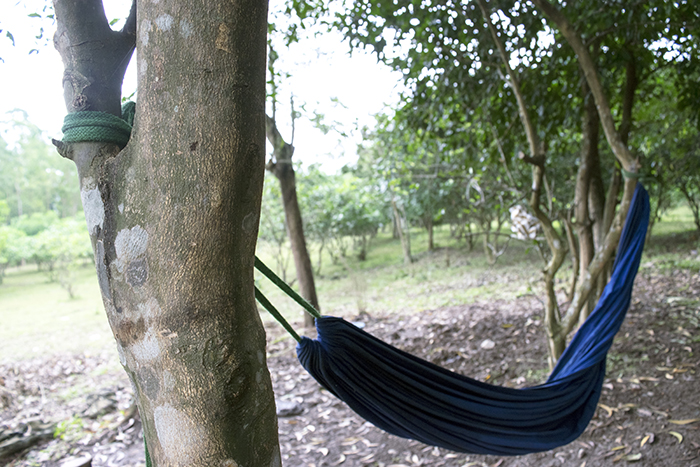
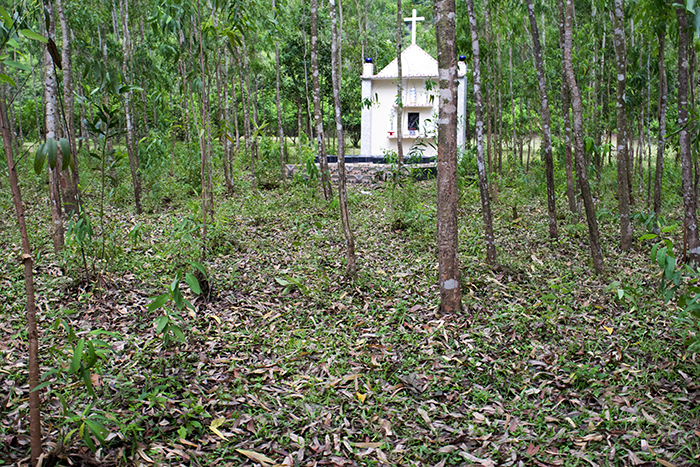
Location: Phong Nha-Ke Bang National Park, Vietnam
Today I found a deserted-looking highway that stretched from the middle of Phong Nha’s main street through the rice fields and into the mountains. I followed it until the afternoon grew late, taking in the grassy quilted farmlands, the grazing water buffalo (many tied by ropes to simple weighted pulley systems), and curious farmers who openly stared at me and my shiny red DSLR.
I wandered down the orange mud paths that separated the wet rice paddy valleys from each other and met several women working on the land. They were amused by my interest in their curved hand-scythes and tied bundles of harvested rice. The engineering of the rice fields was incredible; generations of farmers had hand dug trenches for miles around and set up a damming system constructed only of baseball-sized rocks, mud, and sheets of wood. The deeper I went, the thinner the paths became and soon I had to carefully cross a bridge that was just a tree trunk no thicker than my arm propped up on sticks. Another thin branch had been tied together with ribbons so the crosser could balance themselves, but it couldn’t support any weight.
It was after I crossed this bridge that I came upon a gate (several heavy tree trunks stacked across each other) and a stick fence surrounding a forest of thin, beige planted trees that stuck out from the yellowy-greens and dark bush colors of the rest of the lands. Between the lined trees, I could just make out a bright white building. In the front was an ivory-colored statue of a Christian figure- either Jesus or Mary. There seemed to be small box-shaped memorials in the front as well, like the ones I’d seen placed over gravesites. It was all eerie; the spotlessness of the building and the neon color of the trees felt abnormal. I peered over the gate, craning my neck to get a better view of it and was about ready to start climbing it when I heard the soft suck of rubber soles on mud.
In a gut reaction from my hoodlum-esque childhood, I bolted back over the bridge and down the nearest path. I was almost into the paddies when I finally looked over my shoulder. There was a woman standing on the other side of the gate. She wore the working clothes of a farmer: a plain green jacket and pants, burgundy, thigh-high rain boots, and a pointed, traditional straw Vietnamese hat. She was smiling. When she saw me turn, she waved, beckoning me to come back.
I waved and hesitated. That church was creepy, almost cult-like. And I was in the middle of nowhere. But then the adventurer told hold of me again. The woman opened the gate for me and clasped my hand between her rough fingers. When we shared the greeting and she smiled, the faint traces of crow’s feet around her dark eyes crinkled. I had no idea what age she was; her skin was smooth but her hands were old, cracked and dry from hard labor. She had tied her curly black hair up into a bun but stray waves dangled down, framing her round face. She motioned for me to follow her. We walked past the church-grave-memorial-thing, through another area in the woods, past a clearing where a water buffalo family grazed, up a hill through an orchard where we were greeted by the barks and growls of four little dogs that she fended off with a long stick, and into a clearing with a small, open hut, two plastic chairs, a hammock hanging between two trees, and a shed.
The woman pointed at the hut, the orchards, the buffalo, the dogs, and the shed, then at herself. This is her land, her crops that she plants and cares for and harvests. She spoke in Vietnamese to me but I only shook my head. She smiled anyway, and led me down a dirt path behind her home, through an opening between two large boulders and into another gated plot of land; this one held straight rows of sprouting crops, all kinds of vegetables. And climbing up the mountain was a plot of banana trees. She pointed at herself again and I nodded.
I sat with her on the plastic chairs for a little while, watching the dogs wrestle. As she surveyed her land, I could see the pride sparkling in her eyes. Does she have a husband or a family? Or does she take care of all of this by herself? I determined she couldn’t if this was where she lived; the hut was built for only one person. It was tiny and the bed frame was small. There was no door, no windows, just openings. The bed was protected by only a thin, torn mosquito net. As we sat in companionable silence, she let me take photographs, but was embarrassed when I turned the camera to her.
Finally, I noticed it was beginning to get late in the day. I had quite a trek back into town ahead of me. I stood up and she walked me out, opening and then closing the gate behind me. As I made my way back through the rice paddies, I looked back occasionally. She still stood at the gate, smiling and watching me go. Has she ever had foreign visitors? I couldn’t imagine it; I had strayed quite a bit off path to find my way to her. It made me warm inside just knowing how happy it had made her to share her life with me.